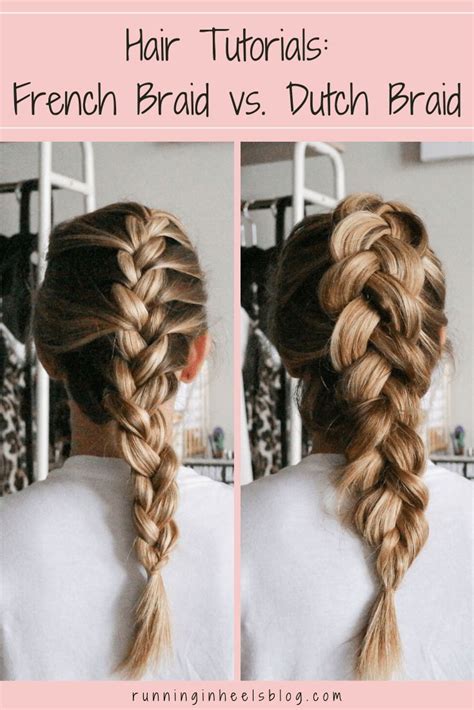Introduction
Hairstyles have evolved throughout history, reflecting cultural and individualistic expressions. Among the most popular and versatile braiding techniques are the Dutch braid and the French braid. Each style boasts unique characteristics, catering to different preferences and occasions. This comprehensive guide will delve into the intricacies of both braiding methods, empowering you with the knowledge to make informed choices.

Key Differences: Dutch vs French Braid
| Feature | Dutch Braid | French Braid |
|---|---|---|
| Weaving Method | Overhand | Underhand |
| Appearance | Thicker, elevated | Thinner, flatter |
| Volume | More volume | Less volume |
| Complexity | Moderate | Easy |
| Versatility | Suitable for various hair lengths and textures | Ideal for long, fine hair |
Dutch Braid: The Braiding Bonanza
The Dutch braid, also known as the reverse braid or inside-out braid, is a showstopper that adds volume and texture to any hairstyle. Here’s how to master this technique:
- Divide your hair into three equal sections.
- Cross the right section under the middle section.
- Cross the left section under the new middle section (formerly the right section).
- Repeat steps 2 and 3, gradually adding hair from the sides as you cross the sections.
- Continue braiding until you reach the nape of your neck or the desired length.
- Secure the end with a hair tie or ribbon.
French Braid: The Classic Charmer
The French braid, a timeless and elegant hairstyle, is relatively easy to execute and suitable for various hair lengths. Follow these steps to create a perfect French braid:
- Brush your hair to remove any tangles.
- Divide your hair into three equal sections at the crown of your head.
- Cross the right section over the middle section.
- Cross the left section over the new middle section (formerly the right section).
- Gradually add small sections of hair from the sides as you cross the sections.
- Continue braiding until you reach the nape of your neck or the desired length.
- Secure the end with a hair tie or ribbon.
Applications and Variations: Braiding beyond Basics
The Dutch and French braiding techniques open up a world of possibilities for creative hairstyling. Here are some innovative ways to incorporate these braids into your look:
Dutch Braid Crown: Elevate a ponytail or bun by braiding a Dutch braid around the head, creating a regal and intricate crown.
French Braid Halo: Divide your hair into two sections and braid two French braids in opposite directions, connecting them at the nape of your neck to form a graceful halo.
Reverse French Braid: As the name suggests, this variation involves weaving the sections underhand instead of overhand, resulting in a thinner and more intricate braid.
Tips and Tricks: Braiding Excellence
- Practice makes perfect: The key to mastering any braiding technique is practice. Don’t give up if you don’t get it right the first time.
- Use a hairspray or mousse: Applying a styling product can enhance hold and prevent flyaways, ensuring a polished braid.
- Experiment with different thicknesses: Vary the thickness of your braid by adjusting the amount of hair you add from the sides.
- Secure the end properly: Use a hair tie or ribbon that matches your hair color to avoid hair breakage and keep the braid in place.
Conclusion
Whether you prefer the bold volume of the Dutch braid or the elegant simplicity of the French braid, these techniques empower you to embrace your creativity and transform your hairstyle. By understanding the intricacies of each method, you can experiment with different variations and unleash your inner stylist. Happy braiding!
Sources
- The Braiding Bible: A Step-by-Step Guide to Over 100 Braids
- The Ultimate Guide to Hair Braiding
- Hair Braiding Styles for Every Occasion
